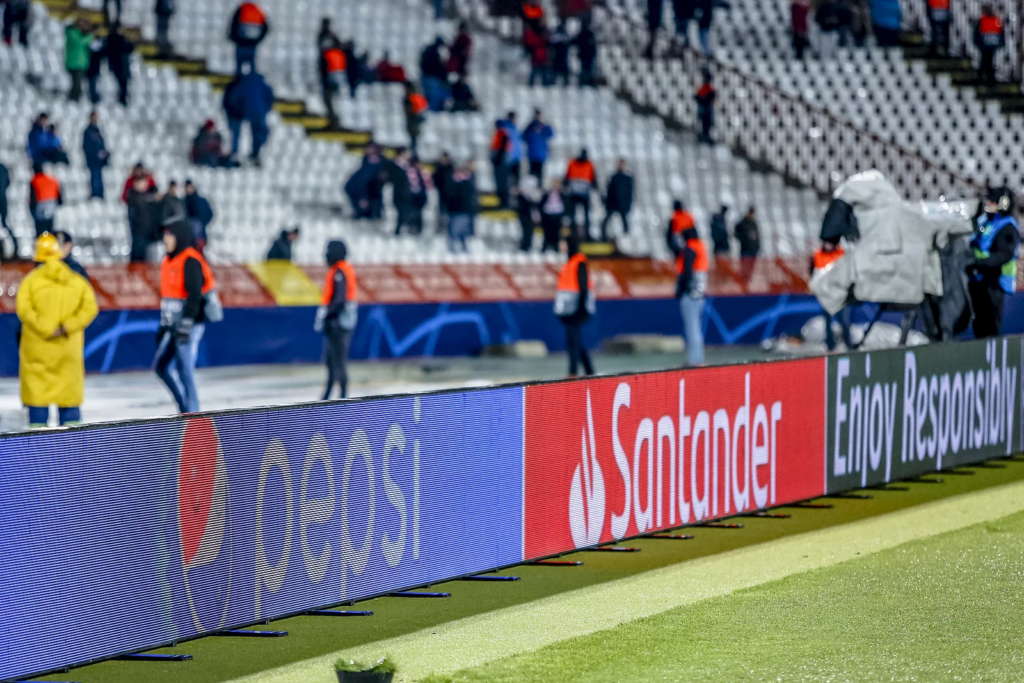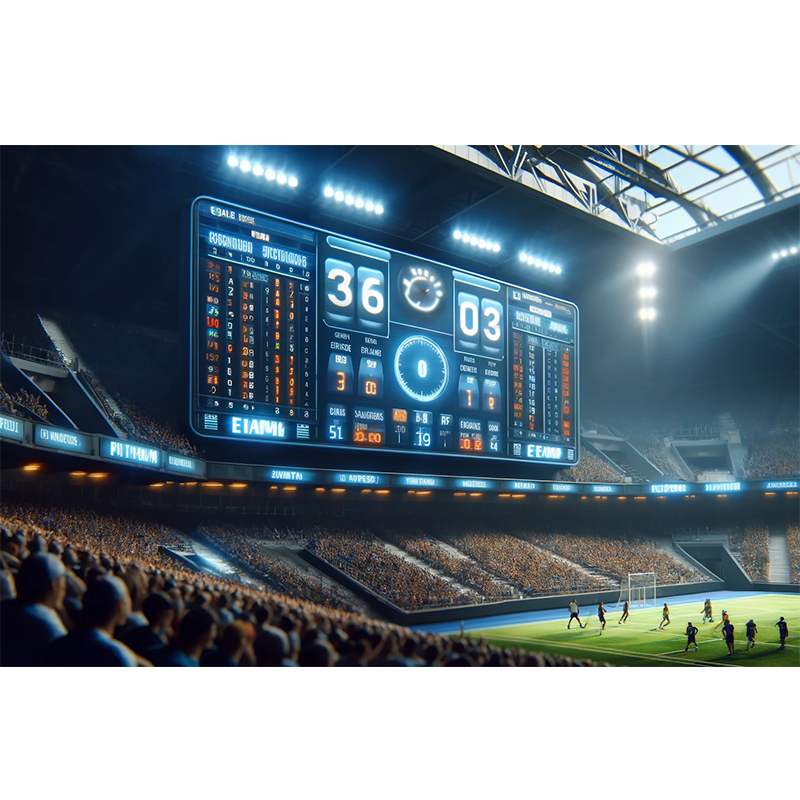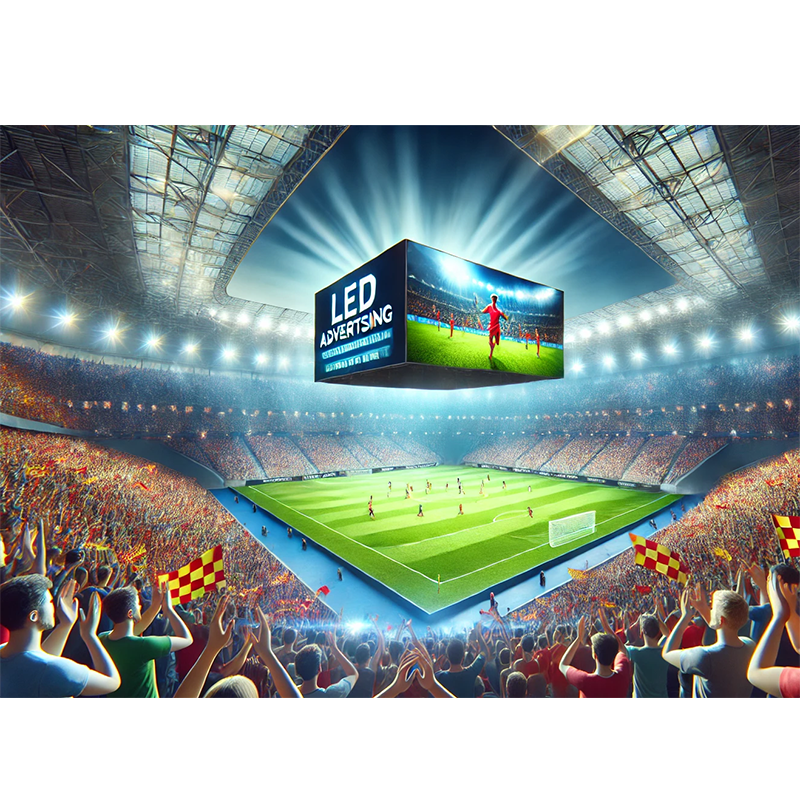Stadium LED display screens have revolutionized the way sports events and live performances engage audiences. These high-definition, large-format displays provide real-time game updates, advertisements, and crowd interactions, enhancing the overall experience for fans and sponsors alike. In this article, we will explore the key features, advantages, and potential drawbacks of stadium LED display screens.

What is a Stadium LED Display Screen?
A stadium LED display screen is a high-brightness, large-scale electronic display system designed for outdoor and indoor sports venues. These screens serve multiple purposes, such as displaying live scores, game highlights, advertisements, and fan engagement content.
Stadium LED screens are typically installed in various locations within the venue, including:
- Scoreboards: Displaying live scores, statistics, and game-related information.

- Perimeter LED Boards: Surrounding the field or court to showcase dynamic advertisements.
- Giant Video Walls: Used for live broadcasting and fan interaction.
- Interactive Fan Engagement Screens: Allowing audience participation, replays, and promotional activities.
Key Features of Stadium LED Display Screens
Stadium LED screens are designed to meet the demanding requirements of sports and entertainment venues. Here are some of their standout features:
✅ High Brightness and Visibility
- Stadium LED screens feature ultra-high brightness levels (≥5,000 nits) to ensure visibility even in direct sunlight.
- Advanced anti-glare technology prevents screen reflection and ensures a clear viewing experience from all angles.
✅ High Refresh Rate and Smooth Playback
- A refresh rate of ≥3,840Hz ensures smooth, flicker-free video playback, making it ideal for broadcasting high-speed sports events.
- Eliminates motion blur and enhances the clarity of replays and live streaming.
✅ Weatherproof and Durable Design
- Outdoor stadium LED screens have IP65–IP67 waterproof ratings, protecting them from rain, dust, and extreme weather conditions.
- Built with corrosion-resistant materials to withstand long-term outdoor exposure.
✅ Wide Viewing Angles
- Offers a 160°–180° viewing angle, ensuring clear visibility for spectators across the entire stadium.
- Consistent image quality from multiple seating positions.
✅ Energy Efficiency and Smart Control
- Modern stadium LED screens use energy-saving LED technology, reducing power consumption while maintaining brightness.
- Smart control systems allow remote operation, scheduling, and real-time content updates.
✅ Modular Design for Easy Maintenance
- LED display modules can be easily replaced without dismantling the entire screen.
- Supports both front and rear maintenance for quick repairs and minimal downtime
Advantages of Stadium LED Display Screens
1)Enhanced Fan Engagement
- Displays replays, live scores, and player statistics in real-time.
- Encourages audience participation through interactive content, such as fan voting and social media integration.
2)Effective Advertising & Sponsorship Opportunities
- Stadium LED screens serve as a powerful marketing tool, displaying dynamic ads from sponsors and brands.
- High visibility ensures a wider reach, increasing sponsorship revenue for stadium operators.
3)Multi-Purpose Usage
- Can be used for concerts, esports events, and other large-scale gatherings, making stadiums more versatile.
- Easily adaptable for different sports events, such as football, basketball, and motorsports.
4)Seamless Live Broadcasting & Streaming
- Ensures high-quality display for live TV broadcasts and online streaming platforms.
- Integrated with cameras and broadcasting systems to provide immersive visuals.

How to Choose the Right Stadium LED Display Screen?
When selecting a stadium LED display screen, consider the following factors:
✅ Pixel Pitch & Resolution
- Small pixel pitch (P2.5–P6) is ideal for indoor arenas with close viewing distances.
- Larger pixel pitch (P8–P16) is suitable for outdoor stadiums with distant audience seating.
✅ Screen Size & Placement
- Ensure the screen size aligns with the viewing distance and stadium layout.
- Positioning should provide maximum visibility for spectators in all sections.
✅ Refresh Rate & Brightness
- A high refresh rate (≥3,840Hz) is crucial for smooth video playback and live streaming.
- Brightness should be adjustable to accommodate different lighting conditions.
✅ Durability & Weather Resistance
- Choose an IP65+ waterproof and dustproof screen for outdoor applications.
- Ensure the screen can withstand temperature variations and UV exposure.
✅ Integration with Stadium Systems
- The LED screen should be compatible with scoreboards, broadcasting networks, and event management software.
- Supports seamless content updates and synchronization with live feeds.
Conclusion: Why Stadium LED Display Screens Are Essential
Stadium LED display screens are a game-changer in modern sports and entertainment venues. Their ability to deliver high-quality visuals, real-time updates, and dynamic advertising makes them an essential investment for stadium operators.
While they require a significant initial investment and maintenance, the benefits—such as increased fan engagement, advertising revenue, and versatile event applications—far outweigh the drawbacks.

